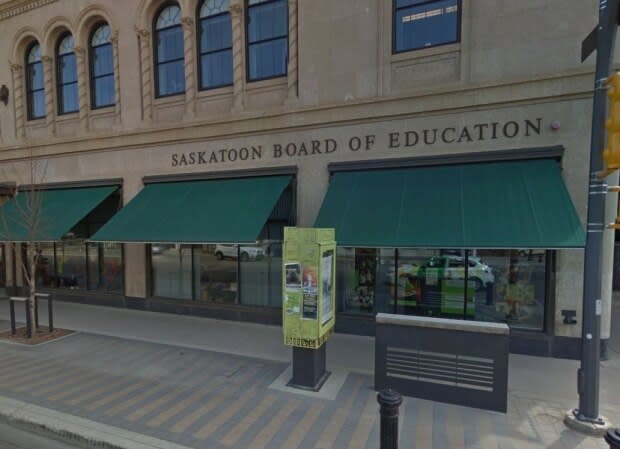Father says lack of internet access at rural home hurting daughters' education
Gord Hiebert says he's tried to get the internet installed at his house — roughly 18 kilometres outside of Saskatoon — numerous times.
But because he's in a rural area, it has either been too slow or too costly.
While some service providers, including SaskTel, have said the installation is possible, Hiebert says he was told it would require the installation of a 20-foot tower on his house — something he worries may be toppled by the Saskatchewan wind, which blows fiercely around his Valley Road home, or cause damage to his roof.
The installation also comes with a hefty price-tag. Hiebert said it would have cost him hundreds of dollars, as he would have to cover the cost of equipment, travel and installation.
Using the hotspot on his cell phone, he's been able to circumvent the issue, allowing his two daughters to access the internet when he gets home from work. But now, with some students across Saskatchewan continuing their education remotely due to the COVID-19 pandemic, he says the lack of internet access is hurting his daughters' education.
"It makes me feel like my kids are being discriminated against, really," said Hiebert, whose children attend the Greater Saskatoon Catholic Schools.
Hiebert said he wants his children to take advantage of the remote learning framework but he has concerns about making his daughters start their school days in the evening, a time he says is usually reserved for family.
"I want to spend a little time with them," he said. "If they've got a full day of school work to do, I don't want them to start it at 6 o'clock when I get home from work. So yeah, it's tough for them."
Hiebert said he would be open to seeing technology, like internet-enabled laptops, deployed to families who want to participate in the province's voluntary learning framework, but don't have access to internet or technology.
"There should be one for every kid and there should be internet available for every kid," he said.

Hiebert said he's recently received emails from the Catholic school division detailing what his children's education plan will look like. These included an email asking parents what kind of access they have to technology.
In a statement from the GSCS, the division said while supplemental learning plans do have a "heavy online component," it recognizes that "access to the internet is a barrier for a significant number of students."
"That is why plans include multiple modes of communication and access to learning. Teachers and staff are in the process of determining access and needs of each student and developing plans accordingly," said the statement. "We're in the early stages of this and don't have solutions for every scenario yet."
In the statement, the GSCS said paper copies of lesson plans and assignments are an option for those without internet access, noting they are working with the Saskatchewan Health Authority to ensure safe handling of physical copies.
The division notes it has already started lending out tablets and Chromebooks to some students, and is working with service providers to ensure families without Internet access are able to go online.
"If parents have concerns about access to learning, we ask that they contact their teacher or school directly to find solutions and ensure all students have access to learning," the GSCS said in the statement.

The Saskatoon Public School Division, the province's largest, has also started to gauge how much access its students have to technology, with teachers already reaching out to families.
"That is the first-order of business that we are doing," said the division's deputy director of education, Shane Skjerven.
Using data collected by teachers, Skjerven said the division hopes to have a solid idea about access levels by early this week and will be working with its staff in education technology to develop a plan around access for students. Skjerven said while the internet is important to education, the division is still examining alternative methods for delivering education.
"We don't want to get into a situation where we are unable to provide learning to families that don't have access to technology," he said, noting the school division is examining how to safely deliver different learning methods while following recommendations from health officials.
This includes "paper and pencil" learning materials.
"It may not be as fancy," said Skjerven. "But it can still be effective in terms of getting at the learning outcomes that are in our curriculums."

He said the change has been a difficult one for everyone involved, including the division's front-line staff and teachers.
"Our teachers want to be in the classroom. They want to be working with students. They cherish the opportunity to get to do that everyday," he said. "Now that they don't have the opportunity to do that face-to-face, I think it is something our folks are a little bit disappointed [about]."
However, the division understands the public health orders are in place for everyone's protection and says they want to make sure they're following the recommendations fully.
For Hiebert, he says the dispatching of technology to students might address issues around accessibility in the short-term, but SaskTel, a Crown corporation, should be doing more to ensure all of Saskatchewan's residents have access to the internet.
"We — as a province — we own SaskTel. Why do we not have better infrastructure for our rural communities? It's terrible," he said. "A lot of the rural communities, they paid the bills to build SaskTel."
SaskTel said in a statement to CBC that it understands how important internet access is for its customers during this time. The statement said since 2010, it's invested roughly $3 billion in its networks, technologies and services, noting its internet coverage reaches 99 per cent of the population using both wired and wireless technology.
While SaskTel offers wired access to 450 communities in Saskatchewan, there are some areas where wired internet is still not an option. In these cases, SaskTel will use its wireless network for internet access, but this requires "line of sight" between the customer and a tower.
"In cases where there are obstacles between the end customer and the tower (such as terrain, trees, and/or man-made structures) it could be necessary for a customer to erect a small tower to ensure their equipment can acquire and maintain 'line of sight' with the tower," the statement said.
The Crown corporation also said it will waive domestic data overage fees for all wireless services from March 17 to April 30, because the pandemic has caused customers to rely heavily on home internet connections.
In a statement, the Ministry of Education said individual divisions are responsible for developing supplemental learning plans for their students.
While the Ministry of Education says models of delivering instruction could include anything from paper and phone calls to "sophisticated online environments," the divisions will determine what methods will be used to meet the needs of their students.

